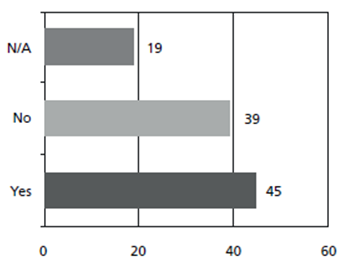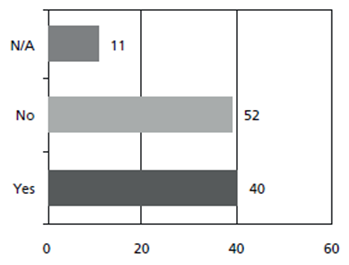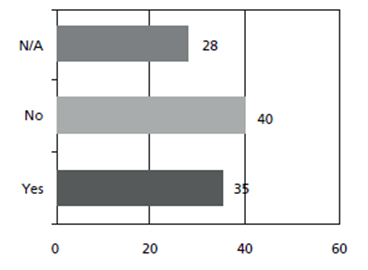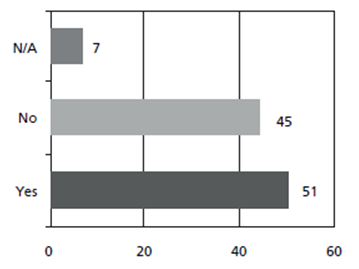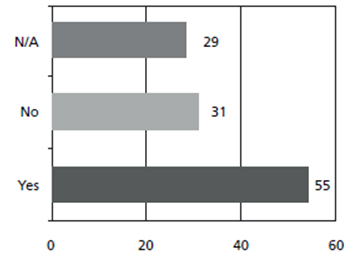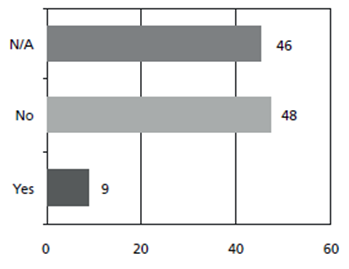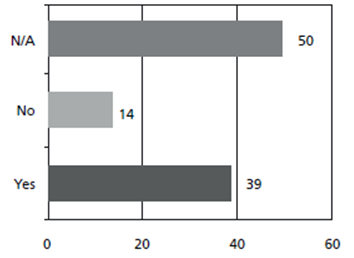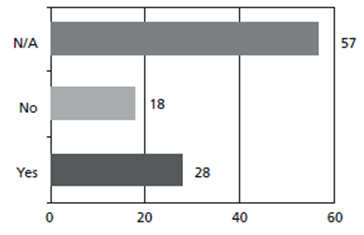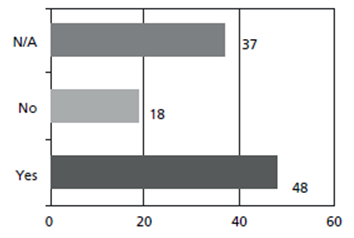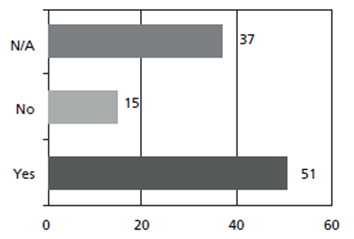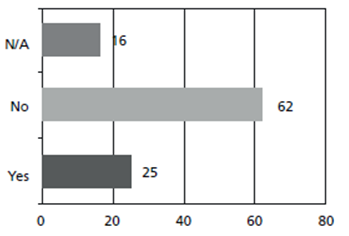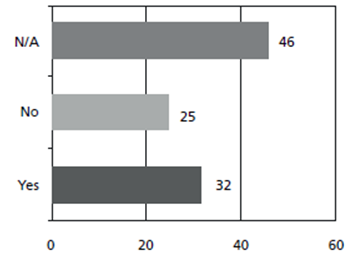Introduction
A study abroad program is a “pre-scheduled, temporary stay in a foreign country for educational purposes” (Taguchi, 2015, p. 4). These programs have been functioning in the US for around 60 years now and consist of an educational initiative that aims to provide students with a better understanding of the world other than the one they know, and a set of personal and academic skills that help them better develop in a globalized world and improve their intercultural competence, which is the ultimate goal of any study abroad experience.
In order to do this, these US programs provide students with a set of tools in the shape of classes, cultural activities, housing with locals, and a continuous guidance throughout the program duration. Local professionals of study abroad (faculty and staff) are the ones in charge of providing students with these tools, and are the ones who work and interact with them on a daily basis.
Our study has been developed in Spain via interviewing professionals that work with US university students on study abroad programs. We will have a look at the work that these local Spanish professionals need to do, at their previous formal training as facilitators, and at the necessary skills and tools they need to have, provided they play an essential role in these programs’ success, aspects about which they have rarely ever been asked or consulted. We will focus on two main research questions: (a) Have local faculty and staff received previous formal academic training for their role of facilitators of study abroad? And (b) how does this preparation (or lack of) translate in their daily work with students? According to these two questions, we assert the following hypotheses: (1) that local faculty and staff have not received previous formal academic training for their role as facilitators of study abroad as such and (2), that this lack of preparation translates into a culture gap between them and the students enrolled in their program, which is usually filled through experience.
Cultural Understanding
The ultimate goal of any study abroad experience is to enhance intercultural competence, understanding this as “a set of cognitive, affective and behavioral skills and characteristics that supports effective and appropriate interaction in a variety of cultural contexts” (Bennett as cited in Anderson, Hubbard, & Lawton, 2015, p. 39). The student must be capable not only of gaining knowledge, skills, and attitudes, but also of integrating them into his/her own experience and becoming a culturally effective and appropriate individual, despite some limitations (Baartman & de Bruijn, 2011; Li, Olson, & Frieze, 2013; Long, 2013; Williams, 2013; Wong, 2015).
If students are supposed to develop deeper cultural understanding and intercultural competence after a study abroad experience, what is it that students and professionals see as “culture”? What does it mean?
Historically, the definition of the term “culture” has been too complex and difficult for it to be assigned a single meaning. According to Vallescar (2000), around 1920 the term became more defined as a result of strong critical reflection on the concept of culture, but still there is not a homogeneous meaning for the word “culture.” Why? This is mainly due to the different disciplines (anthropology, sociology, philosophy, etc.) that provide different perspectives, but also due to the fast changes in society and the events that took place during the first half of the 20th Century. Culture can be understood as “a key element in the process of human development” (Cole as cited in Roth & Lee, 2006, p. 31). It is also a “concrete world of beliefs and practices” (Sewell as cited in Roth & Lee, 2006, p. 32). We also need to understand as culture the different aspects communicated by individuals from one generation to the other through oral or non-verbal language, meaning the history, values, traditions, and so on (Sternberg as cited in Stemler, Imada, & Sorkin, 2014, p. 26). It would also be “the shared philosophies, ideologies, values, assumptions, beliefs, expectations, attitudes and norms that knit a community together” (Owens as cited in Domville-Roach, 2007, p. 19). Students undergo a transition from their home cultures to the target one, which in this case is the Spanish culture.
Students need to learn about this target culture while in the host country and while living outside of their comfort zone for a period of time. This learning process requires a standard immersion period of time in which local staff and faculty give them the clues and guide them through the process, acting as a sort of cultural facilitators. However, students do not always share the same goals and do not always have the same background and interests. To give some perspective, and for the sake of this study, we should keep in mind the following:
The view of the target culture (Spain) has been idealized by most students; each of them has his/her own perspective according to what they have learned, studied, and understood. Students investigate on their own through social networks, study abroad providers’ websites, family and friends, and so on. But also, they have received an image of a traditional Western Europe culture or country described by different writers and they may think they know much about Europe even before getting on the plane (Anderson et al., 2015; Bash, 2012; Beech, 2015; Grey, Cox, Serafini, & Sanz, 2015; Heinzmann, Künzle, Schallhart, & Müller, 2015; Woolf, 2011).
When going from their home culture to the target culture, students need to go through a transition period where they “negotiate and combine ingredients from both cultures” (Engeström, Engerström, & Kärkkäinen as cited in Akkerman & Bakker, 2011, p. 134). In doing so, they need to rely on and trust in what we can call “limit objects,” which can help them as a bridge between both cultures; these objects “can be adapted to both cultures according to the individual’s needs while keeping their own identity along the way” (Star & Griesemer as cited in Akkermman & Bakker, 2011, p. 134). The process of transferring from one culture to the other results in what we can call “third culture,” which creates a learning environment where students share aspects of the target culture in a lifestyle they had in their home culture (Altweck & Marshall, 2015; Wolcott, 2010). What is more important, students need to keep an active role and a positive attitude (Bennett, 2004; Carini, Kuh, & Klein, 2006; Carlson & Widaman, 1988; Engberg, Jourian, & Davidson, 2016; Félix-Brasdefer & Haster-Barker, 2015; Trilokekar & Rasmi, 2011). During this transition period from one culture to another, professionals have a crucial role as facilitators and guide throughout the whole process.
Students need to undergo a state of acculturation, classically defined as the “phenomena which result when groups of individuals having different cultures come into continuous first-hand contact, with subsequent changes in the original culture pattern of either or both groups” (Redfield, Linton, & Herskovits as cited in Altweck & Marshall, 2015, p. 2).
In order to achieve acculturation, students need to build their experiences with the skills they already have and combine them with who they are as individuals. This process is not the same for each student, since each of them will have his/her own personality, background, expectations, motivations, and goals. Affect, behavior, and cognition are essential to this process (Billet, 2013; Bowman, 2011; Brewer, 2011; Gabelica, van den Bossche, de Maeyer, Segers, & Gijselaers, 2014; Savicki, 2013). As we will see later, the accompanying professionals play a crucial role as facilitators in this process.
Study Abroad Programs in Spain
Almost a century after the first Institute of International Education (IIE) programs started in Europe, the phenomenon of study abroad has spread throughout Spain. Most of the biggest US study abroad providers are established in Spain: Council for International Educational Exchange (CIEE), International Studies Abroad (ISA), Cultural Experiences Abroad (CEA), Academic Programs International (API), Arcadia, and more. Students can participate in island programs, where they receive custom-made courses with all US students, as well as in programs that offer mixed or direct enrollment in local universities.
The program offerings are large and stable. Most programs conform to the National Association for Foreign Student Affairs (NAFSA), created in 1964 in the US, and the Forum on Education Abroad (FORUM) (Dolby & Rahman, 2008; FORUM, 2015). There is also a Spanish association that includes most programs, called APUNE, Association of North American University Programs in Spain (Asociación de Programas Universitarios Norteamericanos en España). Created in 1968, it offers seminars and workshops and holds regular meetings for its members. Their mission reads:
Programs in the Association represent accredited North American Colleges and Universities which offer undergraduate and graduate students the opportunity to study abroad for a summer, semester or full academic year. Classes offered include Spanish language and literature, as well as History, International Relations, Economics, Business, Art History, Sociology, Anthropology, Latin American and European Studies. (www.apune.org)
Even though this association exists and provides multiple tools for programs in Spain, not all of the providers are members. Thus, a great opportunity to work toward standardizing and coordinating the study abroad offerings in Spain is lost.
According to the “Open Doors” report for Education Abroad published by IIE, a total of 332,727 US students studied abroad for the 2016/2017 academic year. Out of these, 31,230 (that is, 9.4%) came to Spain (https://www.iie.org/en/Research-and-Insights/Open-Doors/Data/US-Study-Abroad/Destinations).
A large majority of study abroad students complete surveys on their experience, which are usually administered by their study abroad program provider. These surveys, in turn, are used by the provider to improve their services and features. Since the surveys are usually private and anonymous, the results are generally not shared with other programs or institutions. To date there is no global database that summarizes students’ expectations and outcomes, a deficiency which does not allow international education professionals to see a broader view of the real outcomes and needs of students.
Students’ Role in Study Abroad
In order to better understand what study abroad professionals’ work is, we need to pay attention to the students they work with. As we mentioned previously, most programs measure their own students’ overall satisfaction with their study abroad experience. Students usually complete surveys on safety, academics, extra-curricular activities provided, and housing quality, just to name a few categories. Some programs create their own questionnaires while others create them following already made surveys, including but not limited to the following: GAP (Global Awareness Profile), GPI (Global Perspective Inventory), ABOS (Attitudinal and Behavioral Openness Scale), and more (Stemler et al., 2014).
The various surveys share the common measurement of student satisfaction with their program and different aspects of students’ development. Although there is still no full agreement on the validity of these measuring tools (Kealey, 2015), the six aspects of study abroad student development most preferred by the Association of American Colleges and Universities (AAC&U) are: cultural self-awareness, knowledge of cultural worldview frameworks, empathy, verbal and non-verbal communication, curiosity, and openness (Williams, 2013, p. 153).
Developing these aspects above and gaining acculturation in the academic context is a process that must be led by the local faculty and staff as they are the ones providing students with the insights of the target culture. Different authors have proved how students’ learning process is better when study abroad leaders intervene as facilitators of the experience and promote students’ self-reflection (Van Dinther, Dochy, & Segers, 2011; Wong, 2015).
The Role of Local Faculty and Staff
If we agree that local faculty and staff are paramount to a successful study abroad experience, we then need to pay attention to the formal training, background, and skills of these individuals when dealing with US students.
These professionals should have experience with diversity, be familiar with the culture of the students they are teaching, be open, and facilitate reflection. They should encourage student participation and create an appropriate learning environment where students feel supported in order to get the most out of their experience. The professor or staff member, as a culture object themselves, would act as a cultural representative, facilitator, and mediator between the home and target cultures. Although the immersion in the culture already gives students a good opportunity to learn, being “in” the culture is not enough. There needs to be a guide, a facilitator that helps students and who can, among other things, reduce anxiety on the part of the students, challenge them, and help them throughout the whole process (Berardo & Deardorff, 2012; Geboers, Geijsel, Admiraal, & ten Dam, 2012; Keller, Goetz, Becker, Morger, & Hensley, 2014; Kuhn, 2015; Maruyama, Moreno, Gudeman, & Marin, 2000; Roorda, Koomen, Spilt, & Oort, 2011; Rotgans & Schmidt, 2014; Sánchez, 2014; Schallenberg, 2015; Stanulis, Little, & Wibbens, 2012).
Immersion should ideally be customized for each student, meeting their needs and providing adequate discipline and permanent advice (Slimbach as cited in De Graaf, Slagter, Larsen, & Ditta, 2013). The limitations here are visible to us: Students’ expectations need to be known and taken into consideration, but from what we have already seen, these are different for each individual student. Local faculty and staff need to be able to fill in these gaps and provide students with the help they need and, what is most important, these professionals need to know where students come from, what their level of acceptance is, and what amount of challenge they can support; in order to do so, facilitators themselves should have a high degree of intercultural communication competence (Berardo & Deardorff, 2012). In doing so, the role that empathy plays is essential. Empathy allows educators to adopt the students’ perspective and ease the learning process but it should go both ways, not only on the educators’ part but also on the students’ part (Jang, Kim, & Reeve, 2016; McAllister & Irvine, 2002; Spalding, Klecka, Lin, Wang, & Odell, 2011).
Method
This study adopts a mixed-method approach. Through questionnaires and interviews, we gather qualitative data in the shape of open questions included in the questionnaires and interviews, in order to get information from professionals in the field of study abroad in Spain. A quantitative methodology has also been used when analyzing the questionnaire’s liability using the data program Statistical Package for the Social Sciences (SPSS) 22. Questionnaires have been administered and answered anonymously, and interviews have been conducted with participants who provided their contact information when answering the questionnaire. Interviews have been recorded, transcribed, and organized using the qualitative program MAXQDA 12 (see Appendix A for more details).
Selection Criteria
To gather information about study abroad professionals’ previous experience and needs, we contacted in September 2017 some of the existing programs in Spain which offer programs in different cities: CIEE, CC-CS, API, ASA, CEA, and ISA. There was no filter applied in regard to the participants’ years of experience or specific roles in the programs, since all of their opinions are essential to this investigation. Due to program policies, surveys could not be sent directly to professionals, so we distributed them to the directors of US-based study abroad program providers in Spain who then shared the survey with their faculty and staff. Later, in June 2018, we distributed the questionnaire among other professionals of study abroad associated with SIETAR Spain (Society for Intercultural Education, Training, and Research).
Participants are professionals of study abroad that work as professors or administrators for the abovementioned programs in Spain. They are the ones who organize all of the logistics aspects of a program abroad: housing, classes, cultural activities, emergencies, daily advising, and so forth. They keep in frequent contact with students in and outside of classrooms and are the key elements for a program’s success. When asked about their previous academic backgrounds, interviewees reflected a wide variety of responses, mainly psychology, English philology, secretary degree, communication, translation, economics, and computer science. Four of them have a master’s degree; there is one respondent in the process of obtaining a PhD, and two others who hold a PhD in English or humanities.
Questionnaires and Interviews
The questionnaire was created using a Google Docs template and distributed by email to a total of 122 faculty and staff in Spain. A total of 103 responses were received, which means a participation rate of 84.4%. Participation was optional but highly encouraged through email and phone conversations. There was significant interest on the part of the participants, since most of them had never received any similar survey or had been asked about their previous training and the perspective of their students before and were eager to share their thoughts.
The questionnaire we administered consisted of 12 yes/no questions. The questionnaire was designed according to our own previous experience in study abroad program administration and by gathering some professionals’ feedback on the accuracy of the questions; it also asks four open-ended questions that serve as an essential source of qualitative information for this research (Appendix B).
Since some participants gave an N/A answer to some of the questions, we conducted personal interviews with 15 of them in order to collect data that would clarify the neutral answers to some of the questions. The 15 were those who had provided their contact data when filling in the questionnaire. Interviews were recorded, transcribed, and organized using the qualitative program MAXQDA 12 (Appendix A). The aim of these tools is to study the two research questions: (a) Have local faculty and staff received previous formal academic training for their role as facilitators of study abroad? And (b), how does this preparation (or lack of) translate in their daily work with students?
To check the questionnaire’s liability index, we administered the program SPSS v.22 obtaining a Cronbach Alfa of 0.747, as seen on Tables 1 and 2. Liability statistics need to be over 0.7 in order to prove that a questionnaire (in this case) has a good liability and is useful and accurate for scientific research of this kind. A hundred percent of cases (variables) were valid, and 12 elements (number of yes/no questions on the questionnaire) were taken into consideration.
Results
Results of questionnaires and interviews will be grouped together in order to provide better accuracy to the answers. These can be analyzed according to the two research questions:
RQ1: Have local faculty and staff received previous formal academic training for their role as facilitators of study abroad?
Figures 1, 2, 3, and 4 show the professionals’ previous knowledge on study abroad and their answers to the first four questions in the questionnaire.
Figures 1 to 4 show, on one side, that about half of these professionals knew about the existence of study abroad programs and had previous experience with US citizens and at university level, but Question 3 also proves the lack of specific training as facilitators of study abroad that most local faculty and staff share; only 35% of respondents say they had received formal training. These first four questions are linked with the open question: “What was your previous knowledge about study abroad programs?” which gives respondents the opportunity to expand their comments and provides interesting answers (all translations from Spanish by the authors):
I received training as I moved up in this organization. But when I arrived and started as program assistant I didn’t have any training in aspects such as “integration.” (Prof.13)
I had no previous knowledge about study abroad programs. (Prof.87)
I really had no idea about study abroad. (Prof.45)
None of respondents has had any specific academic course in intercultural affairs, intercultural communication, or similar, or had been formally trained in the role of facilitators, other than learning some logistics aspects.
As for the interviews,1 the following questions align with the first four questions in the questionnaire (Appendix B):2
Question 1: Had you received specific formal training prior to working with US students? (FORPRV)
Not when I started. There is no specific training, at least that I know . . . I have learnt through experience (Prof.6)
This specific answer summarizes our second hypothesis on the lack of specific formal training and on how professionals learn through experience. All of the 15 interviewees answered “no” to this question.
Question 5: What would you have liked to know before working in this job? (INFPRV)
Many things. Having some knowledge on laws would have helped me, knowing how USA universities work in terms of credits, their policies, safety issues, terrorist attacks protocols, etc. (Prof.12)
Except for one of the interviewees who is fine with having learned from experience, the rest of them identify their lack of knowledge about the profile of the students they were going to work with, their needs, and goals as a negative aspect which means an obstacle for them. As we saw before, professionals believed they needed to have certain skills and a high degree of intercultural competence themselves in order to work as effective facilitators.
Question 2: What would you say is your job’s biggest difficulty? (PRPDIF)
The main difficulty is how to set up a frontier with students, because you need to be available 24/7 and receiving messages from all sides of the field. The US is a very service-oriented culture and students are also outside of their comfort zone so they are always…out. And they are very demanding. (Prof.7)
Along the line of the two hypotheses, one of the consequences of professionals not having received previous specific training as cultural facilitators is the lack of connection and the frequent misunderstandings that arise between professionals and students. As we can read in the former comment which summarizes the rest of answers to this question, cultural differences remain the main difficulty in these professionals’ daily activity. This being the case, it becomes hard for most of them to act as effective cultural facilitators and ease the students’ transition into the new culture (Allen & Hermann-Wilmarth, 2004; Dejaeghere & Zhang, 2008; Knight et al., 2015; Marx & Moss, 2011).
All of these data would partially confirm our first hypothesis that most professionals do not often have specific formal training in their role as facilitators of study abroad. They have mostly learned through experience and, as a starting point, they only share the necessary ability to speak English. When developing the answers in open questions and interviews, respondents agree that they start in these programs from the bottom roles and learn through experience. According to their answers in open questions and interviews, respondents who said they had worked with US citizens before had done so as Spanish teachers or as tourist guides. This leads to our conclusion that the majority of professionals involved in study abroad start working without any formal academic knowledge of their tasks, obligations, and duties, and without knowing much about working with US students on this kind of programs. As we saw before, this is an essential requirement for a cultural facilitator that is not fulfilled and which can bring a lot of misunderstanding and a big culture gap between them and their students. This last statement would also confirm our second research question.
RQ2: How does this preparation (or lack of) translate in their daily work with students?
Despite most of them not having received previous formal academic training for their role as facilitators, the perspective of these professionals is essential to the success of any kind of study abroad program, since they are the ones in direct and daily contact with students. Figures 5, 6, 7, 8, 9, 10, 11, and 12 show the responses to how professionals prepare themselves and how they perceive students abroad. These answers are proof of the different perspectives between students and professionals and support our hypothesis that professionals’ lack of preparation translates into a culture gap between them and the students enrolled in their program.
Although respondents identify little previous knowledge on the part of the students about the target culture, high percentages point to the fact that faculty and staff see a genuine interest on the part of most students to learn more about the culture not only in classrooms but also in outside organized activities, which would align with the importance of the role of professionals as facilitators of the experience for students. However, most students do not use Spanish as the main language of communication, which creates a barrier to integrating into the culture. This, together with the lack of formal academic training for professionals, brings up a cultural gap that is sometimes hard to fill, as our second hypothesis points out.
Questions 5 to 12 in the questionnaire are linked to the open question, “Please describe what you perceive as the biggest difficulty in working with US study abroad students,” as a way to determine which areas of their role have been harder and which would need improvement. These testimonies about the biggest challenges also confirm the existing gap between professionals and students. In order to organize answers in a coherent way, they have been classified by thematic categories as reflected in Table 3.
Table 3 Biggest Difficulties of Working With US Students Abroad
| Categories | Participants’ testimonies |
|---|---|
| Cultural differences | Facing situations where cultural aspects apply, such as what is politically correct, is still hard for me. (Prof.36) The imposition of USA-style norms that put limits to the local way of doing things. This limits the students’ experience since they have a program that is in between their home culture and our own…a bad mixture. (Prof.68) The idea that the meeting point for students and locals is “the culture”. The culture at the end of the day is another service we provide them, where everything takes place in a customized way according to the students’ expectations and final satisfaction. (Prof.11) |
| Lack of interest on the part of students | Many times they don’t take interest in activities that would enrich their experience. (Prof.90) Many students are only interested in having fun, which makes later development in academic activities really difficult. (Prof.3) The biggest issue is the lack of interest in the program and the culture. As our city is a touristic one some students (luckily not all) come like on paid holidays and that makes it difficult for us to focus on academic and cultural activities. (Prof.77) |
| Unclear expectations | Sometimes the students’ expectations differ from our mission and goals. While we are focused on high quality academic programs, students seem to be more satisfied with classes/activities that require less work and mean more fun. (Prof.33) We ask for honesty from them, but sometimes they are afraid of complaining and we don’t hear about problems until the end. It’s not like this for most of them, but it still happens. (Prof.45) |
As for the interviews, the following questions aim to provide a deeper look into the professionals’ perspective and how different it is from what students claim as their priorities, what would also confirm our second hypothesis.
Question 3: From your perspective, which are the students’ priorities? (PRIALU)
The main priority is having fun and after (getting) the credits. (Prof.2)
According to the literature, students’ declared priorities when travelling abroad were: improving the language (Spanish); making Spanish friends; improving their independence and autonomy and learning more about different cultures (Li et al., 2013). But when asking professionals about what they perceived to be the students’ priorities, results are very different, which is another signal of the lack of connection between them.
Most answers are unanimous in pointing to the experience itself as being the most important for students, together with gaining the necessary academic credits, an aspect seen in the revised literature (Long, 2013).
Question 4: Do you think students have clear expectations regarding their stay in our country? (EXPCLA)
I think that many of them are not prepared for the cultural shock and their expectations about Spain do not match the reality. (Prof.6)
Undefined expectations do not necessarily point to a negative aspect of the experience, since it can be considered that students come with an open mind and free of prejudice, and this seems to be a more proper state to enjoy the time abroad (Stemler et al., 2014; Williams, 2013). However, working with students that do not know exactly what they expect enlarges the cultural gap and makes the professionals’ work harder.
Question 6: How do you think the “cultural gap” between students and faculty/administrations can be saved? (MJRVCU)
I think empathy is the main tool to break the culture gap between students and professionals (Prof.7)
When reviewing the literature, we noted the importance of empathy in intercultural education, more specifically in study abroad (Jang et al., 2016; McAllister & Irvine, 2002; Spalding et al., 2011). And as we can read from interviewees’ answers, empathy, mutual knowledge, and detailed information on the “other” are essential to saving the cultural gap and building rapport.
Question 7: Which would you say are an international educator’s necessary tools and/or skills? (SKITOO)
Empathy and being able to look at the big picture (Prof.11)
We have seen before how empathy is placed as the number one competence that all educators should have; empathy allows educators to adopt the students’ perspective and ease the learning process. It helps us take a different perspective (Bennett, 2004; Jang et al., 2016; McAllister & Irvine, 2002; Spalding et al., 2011; Stemler et al., 2014). We have found in this study a good example of the importance of empathy, since out of the 15 interviewees, 13 of them specifically declared empathy as the key element in any intercultural scenario.
This study’s findings can be summarized by going back to our hypotheses about the lack of previous formal training for professionals of study abroad and how this translates into a culture gap with the students they are working with.
Conclusions and Implications for Further Research
This study focused on two main hypotheses: (1) Local faculty and staff have not received previous formal academic training for their role as facilitators of study abroad as such and (2), this lack of preparation translates into a culture gap between them and the students enrolled in their program, which is usually filled through experience. Hypothesis 1 proved to be correct for most of participants and Hypothesis 2 has also been confirmed through data analysis and participants’ testimonies.
Study abroad programs present an opportunity for students to improve and enhance their intercultural competence. In order to do so, they need to rely on the professionals that work in the field who, at the same time, must be inter-culturally competent in order to function as valid facilitators of the experience for students. Findings in this article point to the fact that most study abroad professionals who participated in this study so far have not received formal academic training on how to play the role of facilitators and, in turn, learn through experience, which brings together a cultural gap that should be prevented. Although some of the participants declare to have received some information on their tasks and have tried to prepare themselves, they still see a need to create and implement a formal training strategy that would benefit themselves and how they act as cultural bridges for students. As part of this strategy, empathy seems to be the crucial skill that would help knit a coherent and well-structured study abroad program that leads to an improvement of intercultural competence.
According to this and looking closely at professionals’ feedback, we believe that a standard training period for professionals should be established; including aspects such as intercultural competence, culture specifics, culture differences, third culture, empathy, negotiation, and the role that personality plays in intercultural encounters, among others.
The main conclusion we can reach after revising the existing literature and comparing it with this study’s results is that professionals should be, first, formally trained in intercultural competence and in intercultural tools in order to work as valid and strong bridges between both cultures and as the perfect guide for students to rely on. Professionals, as objects of the target culture themselves, need to learn what is expected from them and need to be trained not only in the logistics and daily issues of these programs, but also in the needs of the students and their role as facilitators. This training strategy should include, among other aspects: national educational system specifics, intercultural competence, culture aspects like behavior in class, leisure, legal aspects, historical background, personal relationships, and labor specifics.
Would this cultural gap have been smaller if staff and faculty had received previous formal training? It is something we have not asked in this study but we think that answers provided by interviewees point to the fact that defining and implementing a formal training period for local faculty and staff would be a very interesting and essential task for the success of study abroad programs in Spain. Communication and interaction between professionals and students are, as we have already seen, key points of study abroad success and all components should be carefully investigated and attention needs to be paid to the other part of the cultural interaction, namely the student. Study abroad programs evaluate the final satisfaction of students and pay attention to their needs during their stay abroad, but there is not a general rule about the amount of work that is required by students before they come to Spain. Implementing a survey where students could reflect on their personal experiences, achievements, and failures would provide programs with valuable information on how to better address students’ needs, and would consequently help programs improve their professionals’ set of tools.
There are also other aspects that we have not included in this study but that should be taken into account when further investigating this issue: different generations, fields of study of students, languages of study, levels of foreign language, and disciplines taught. All of these would most likely throw a different light and perspective and would most likely enhance opportunities for both students and professionals.
Limitations of the Study
This current study is limited in size and scope. Access to the opinions and feedback of professionals of study abroad in Spain is reasonably easy and it is fair to say that we have found very good dispositions on their part to collaborate with us, but the study abroad community is still small, so answers are small in number if we think about the big phenomenon of study abroad as a whole. Despite professionals’ valuable feedback, we haven’t had access to programs’ internal policies, so we haven’t been able to investigate further on what strategies (if any) are being implemented towards faculty and staff formal training.
The study applies to local faculty and staff in Spain, so we cannot be sure if results could apply to other countries where study abroad is also an established and widespread phenomenon, but it is definitely an interesting investigation to be done. However, provided that most of the programs that currently operate in Spain also have programs in other countries and follow the same guidelines (adapted to local cultures), we can imagine that answers would be similar if we asked faculty and staff in other countries.













